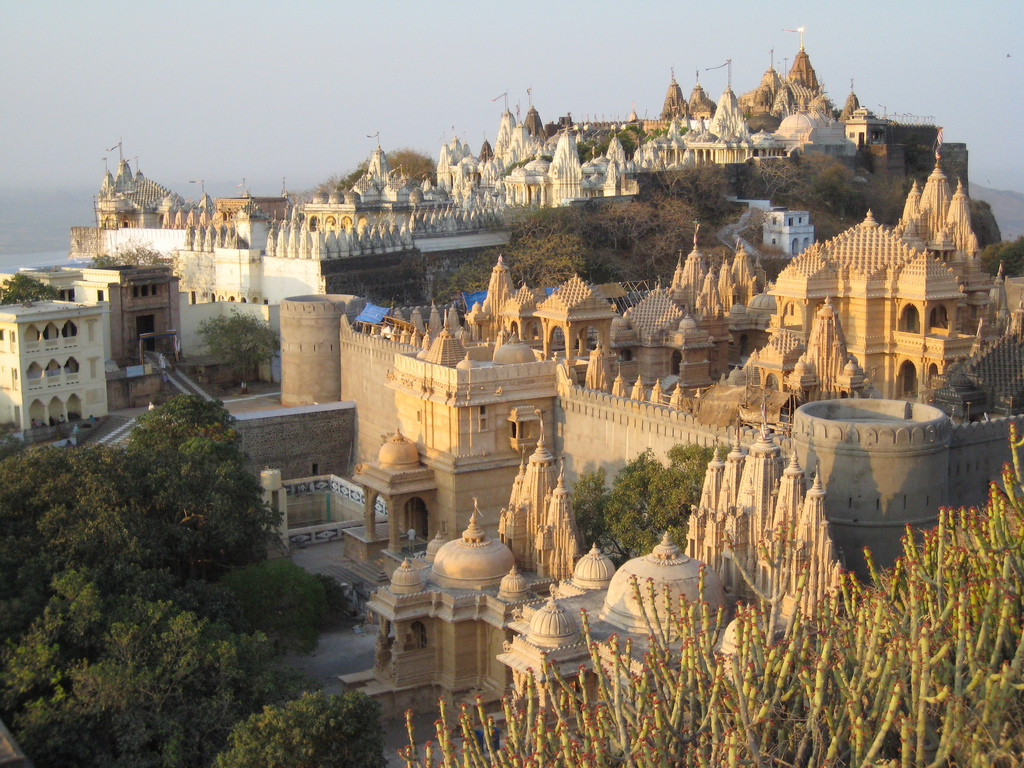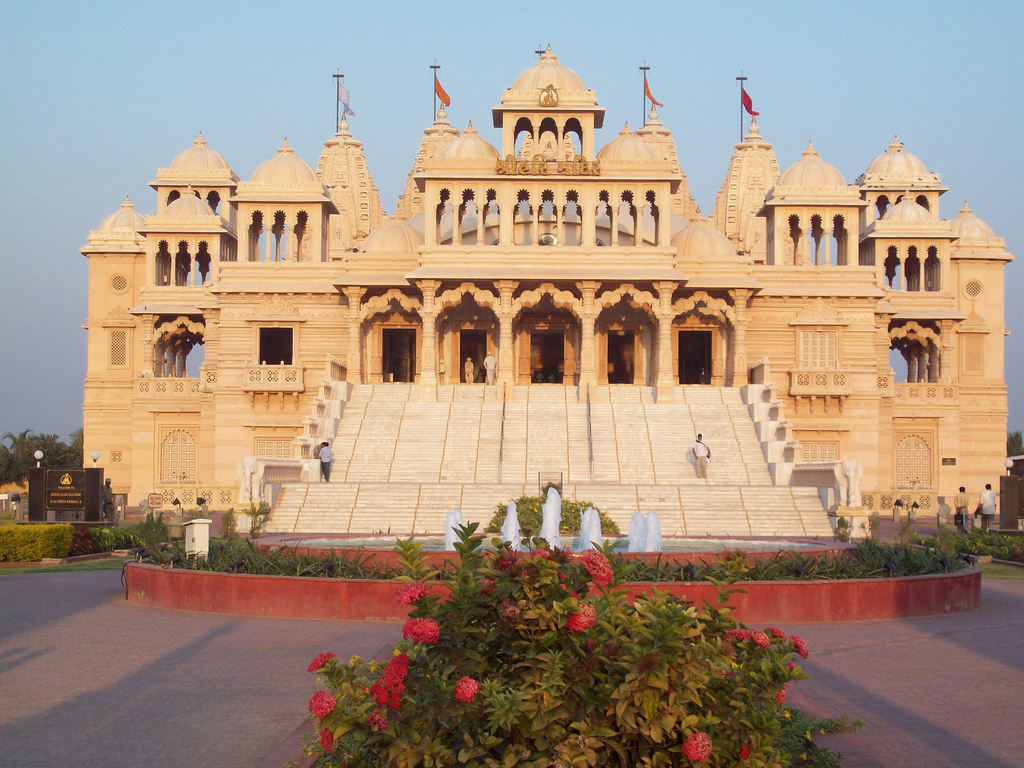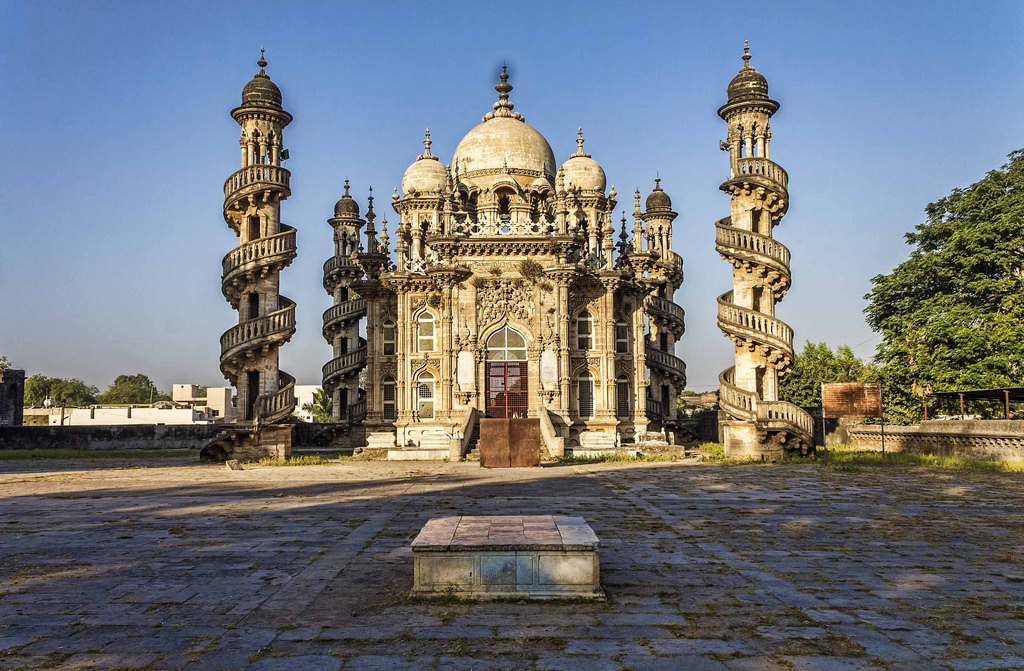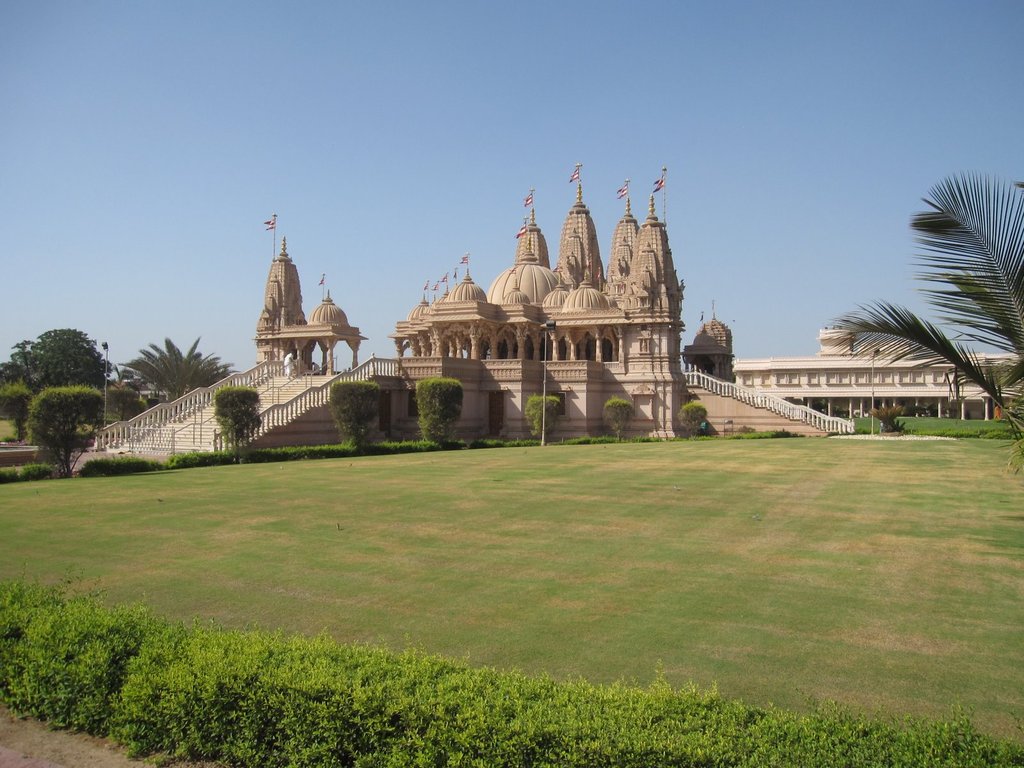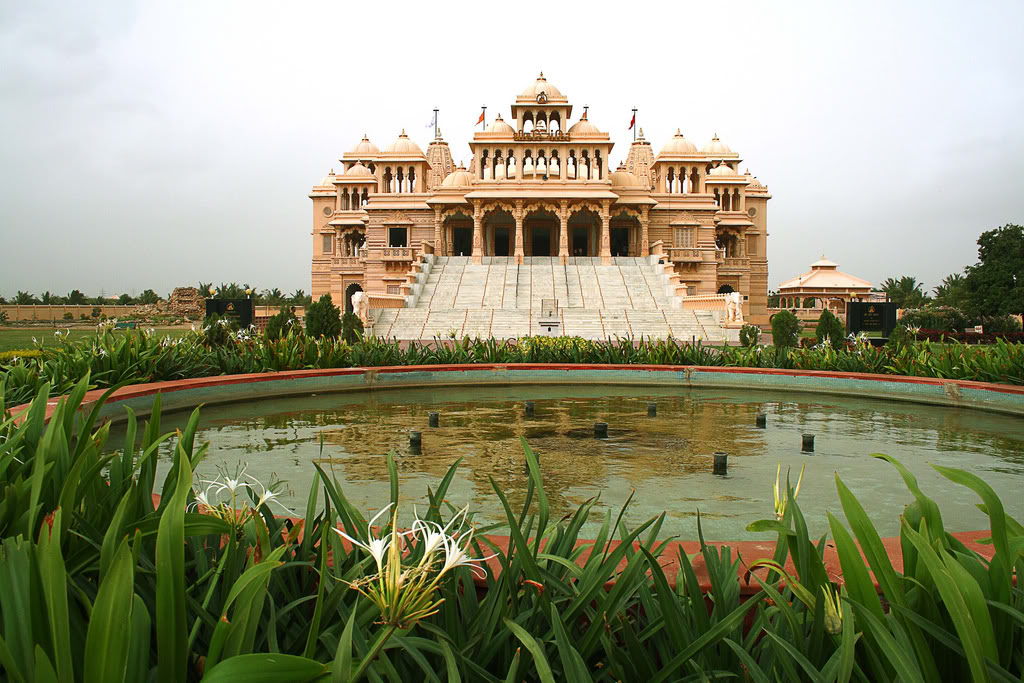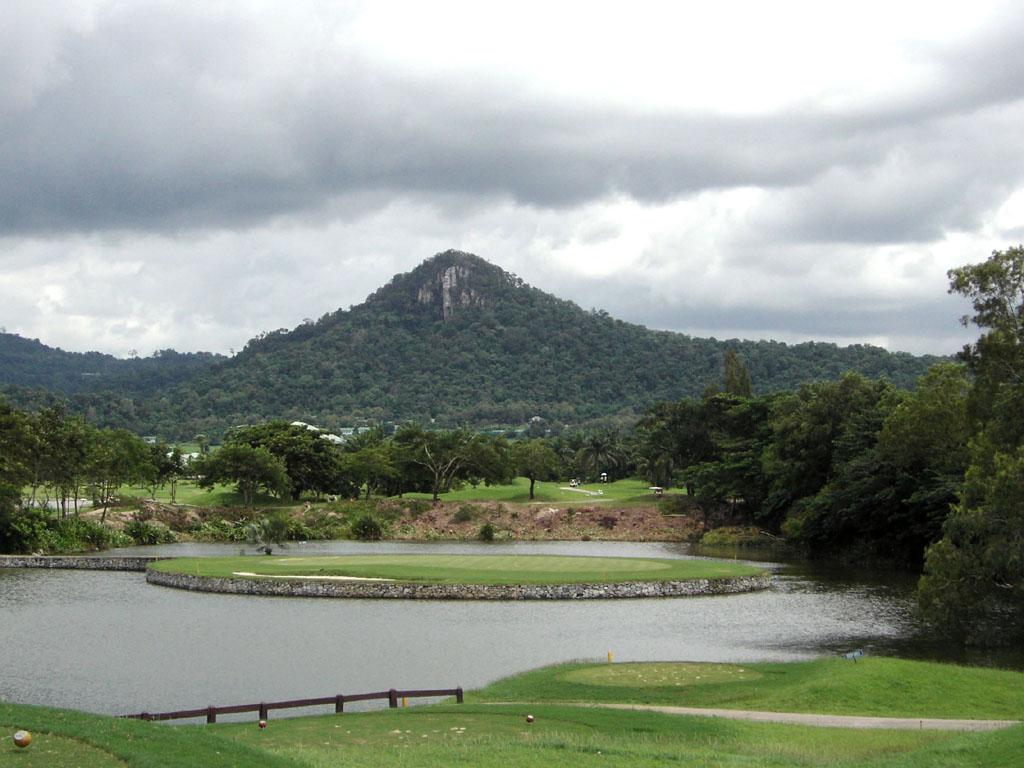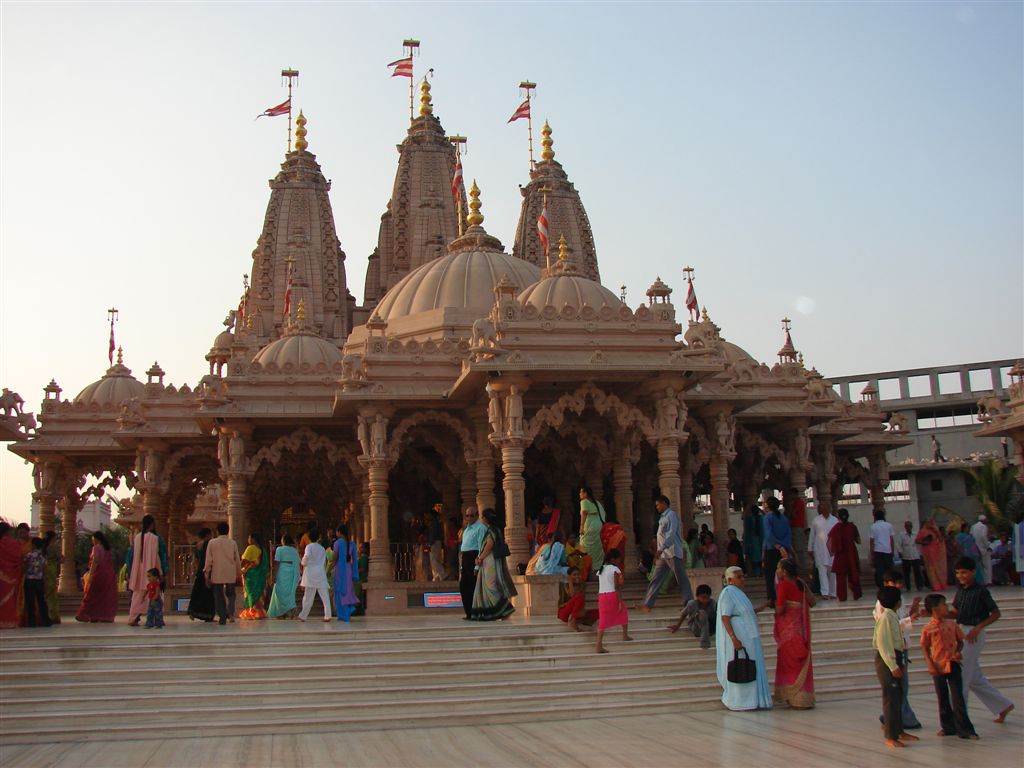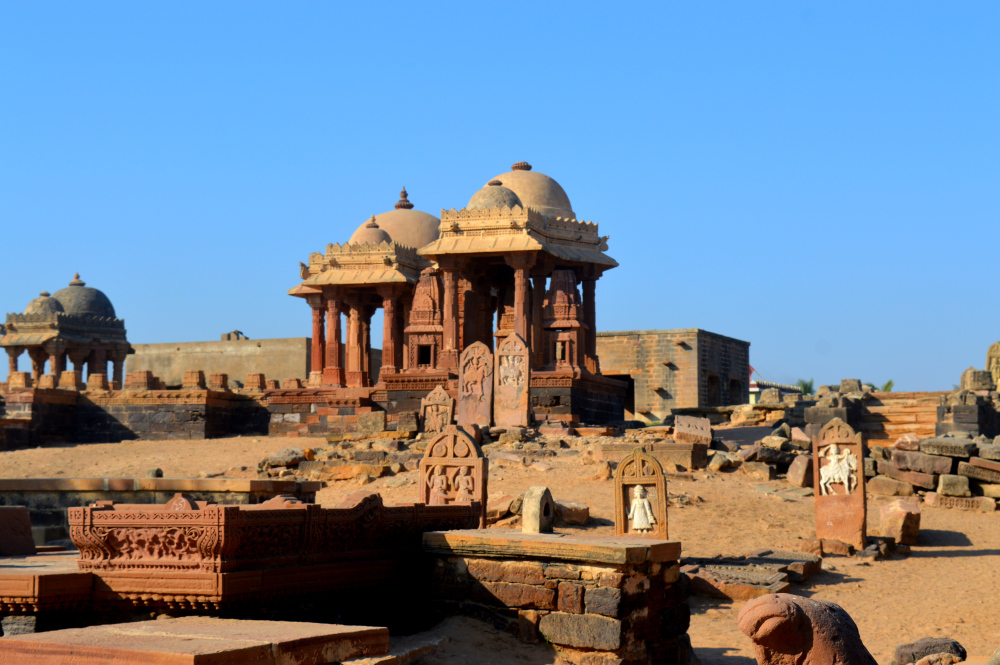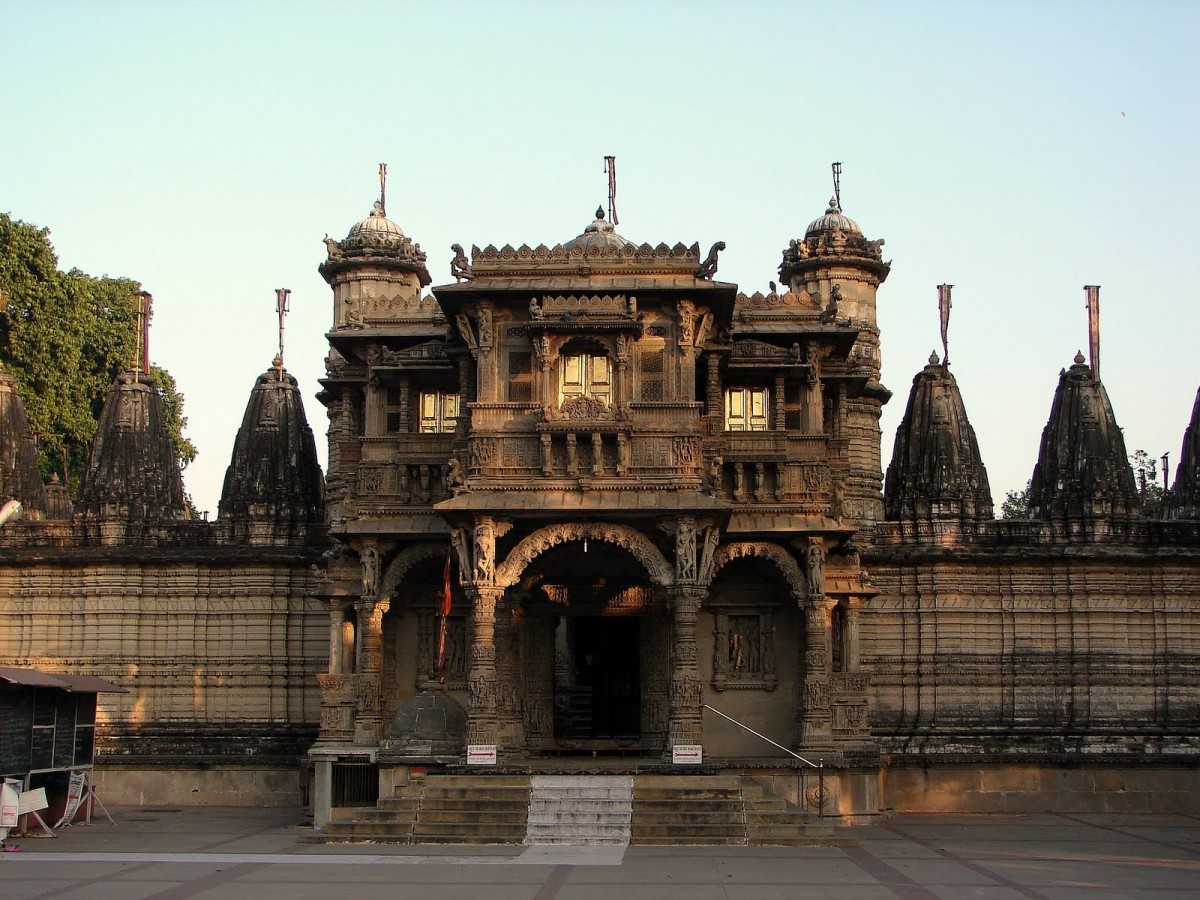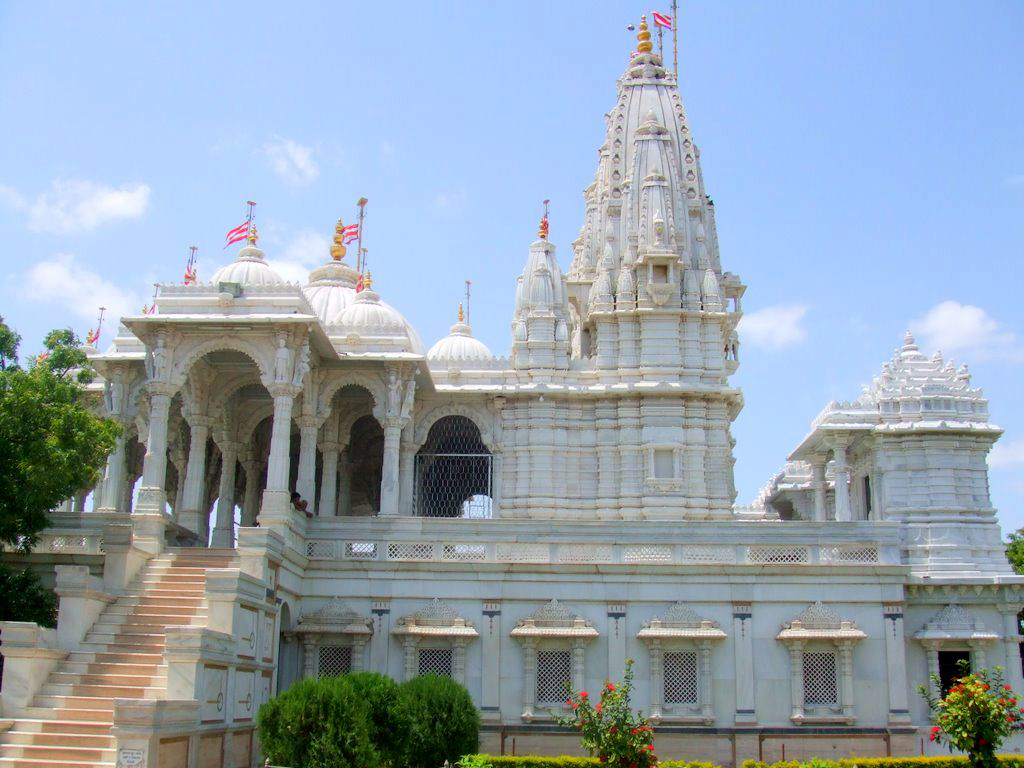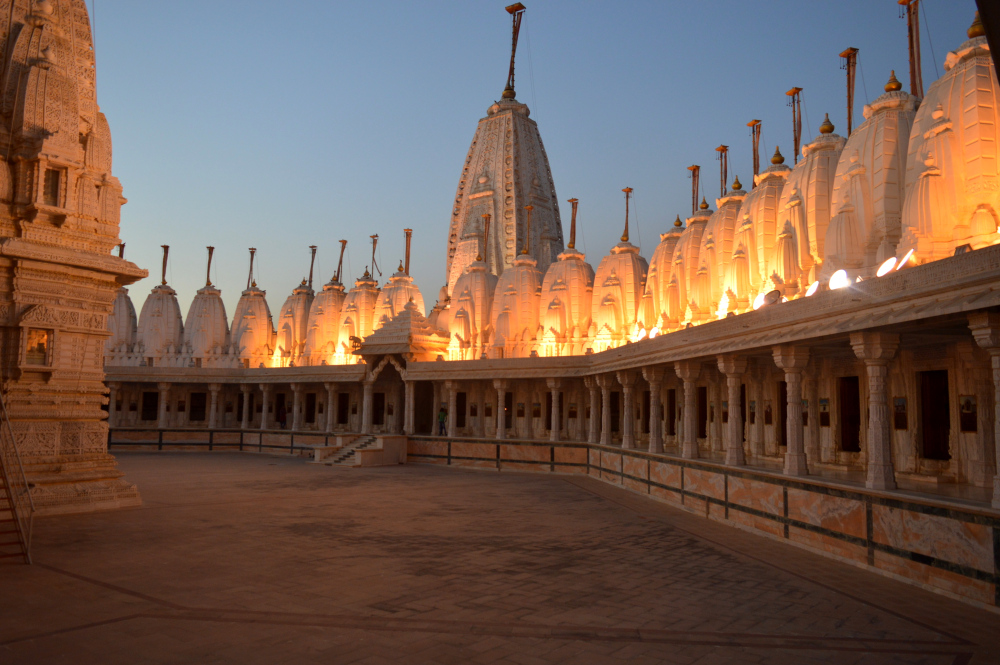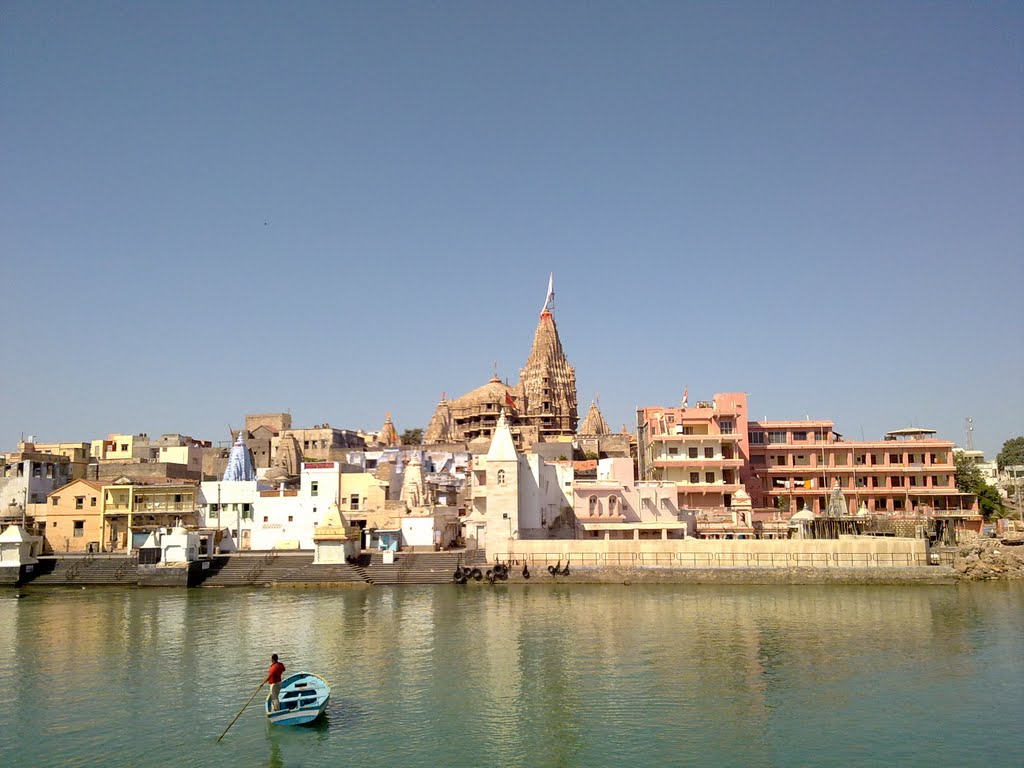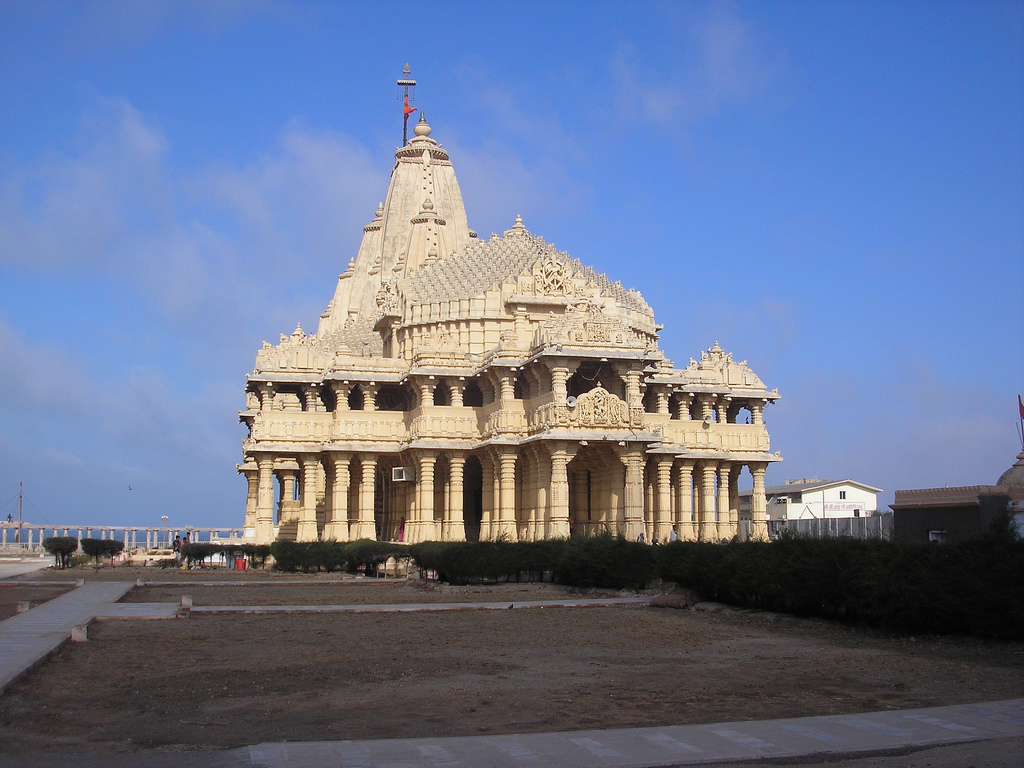
Somnath Tourism and Travel Guide:
History of Somnath: Somnath – this temple town has a long and chequered History. Even though it is referred to by several other names, names it acquired in the various phases of History, the name Somnath is unrivalled as far as popularity is concerned.Somnath And understandably so because this small town would have faded to oblivion but for the presence of the magnificent Somnath Temple from which it receives its best known name.
Deo Pattan, Prabhas Pattan, Pattan Somnath (some of the other names of this sea side town in Gujarat, India) would have all been erased from public memory. But instead of that

this place has made a distinctive place for itself primarily because of this brilliant structure. The History of Somnath (as in referring to the city) is so completely dominated by the History of Somnath Temple that it would not be exaggeration in the least to say that they are synonymous.
Not much is known about the early History of Somnath. However it is popularly believed that the first temple existed even before the commencement of the Christian era. The second was built in the period 480-767 A.D. by the Vallabhi kings. This was again replaced by the Pratihara king Nagabhattta II in 815 A.D.
The Somnath temple which enshrines one of the twelve Jyotirlingas was so highly revered that people from various nook and corners of the country came to offer their prayers here.
As many as 2000 Brahmin priests were engaged in temple activities and the revenue collected from ten thousand villages were used for its maintenance. Prayers were announced by ringing the bell which was attached to a golden chain. Its walls were nothing less than pages of History. The exquisite sculptures were a reflection of the times and the pillars even had the names of the sculptors carved on them.
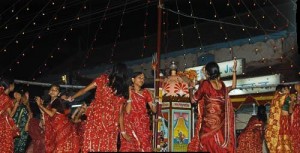
Unfortunately what happened in the year 1025 was a very unfortunate event in the History of Somnath. Muhammad of Ghazni invaded the city and in spite of the valiant resistance put up by fifty thousand Shaivites, the temple was looted and razed to the ground. What was regarded as an architectural masterpiece was demolished brutally.
King Bhima of Gujarat and King Bhoja of Malwa then took upon themselves the noble task of renovating this fine edifice in red sandstone. However it was fated to be destroyed once again by Alaf Khan in 1300 A.D. This time King Mahipala belonging to the Chudasama dynasty renovated it.
Somnath Thereafter also the History of Somnath is punctuated with episodes of destruction and reconstruction at various points of time in the 14th, 15th and 16th centuries. Finally the temple was once again ruined in 1706 by Mughal Emperor Aurangzeb. After that more than two hundred years passed before Sardar Vallabhbhai Patel finally took upon himself the responsibility of constructing it once again in the year 1947. Much to the glory and pride of not just Somnath but of the whole of India this stunning temple was once again
reincarnated. Presently this “Shrine Eternal” is visited by a large number of pilgrims as well as by common tourists. So without further delay you too can plan your Tour to Somnath to witness this majestic temple.
Climate of Somnath: The climate of Somnath is mild with the temperature ranging between 20°C and 28°C in
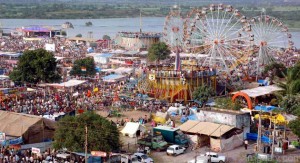
the winters and between 28°C and 34°C in the summers. One can visit the place round the year but the best season to visit is winters-from October to March.
How to Reach Somnath?
BY AIR – The nearest airport from Somnath is Keshod 55 km away and linked to Mumbai. There are regular buses and taxis plying between Keshod and Somnath.
BY RAIL – The nearest railhead is seven km away at Veraval, which is connected by train to Ahmedabad and some other cities in gujarat.
BY ROAD – State transport corporation buses and private coaches run regular service to other cities in the region. Somnath is connected by a good road network to the other nearby places like Veraval, Mumbai, Ahmedabad, Bhavnagar, Junagarh, and Porbandar.
Shopping in Somnath: Somnath, a city in the State of Gujarat, draws tourists from far and wide. The various shrines, temples, monuments and museums act as key tourist attractions of this place. However, besides taking a trip to these tourist destinations, Bazaars in Somnath are also a good place to keep you busy during your tour to Somnath.
If you are a shopaholic, the Bazaars in Somnath, Gujarat, India would charm you to no ends. Even if you are not tempted by the activity of shopping, you can still purchase some things for your folks back home.
If you can get some time out of your busy schedule, Shopping in Somnath would mesmerize you for sure by the variety of things on offer. As the shops of Somnath Markets have some interesting articles of different price ranges up for grabs,
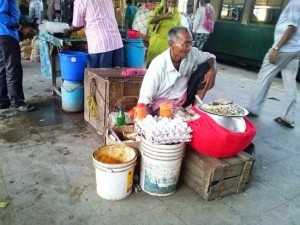
shopping at this place could be an amusing activity. In fact, besides the usual sightseeing, several tourists pay a visit to the Somnath Markets to pick a thing or two that catches their fancy.
Near the holy places of Somnath, you can buy some religious articles. Some other articles that are major attractions at the Bazaars in Somnath are wall hangings, animal trappings, marriage costumes, quilts and cradle clothes. Many of these pieces are appliqued, embroidered and adorned with beadwork.
In quite a few of these items, you would also notice beautiful embellishments that make use of shells, sequins, mirrors and buttons.
So, make sure to pick some articles from Bazaars in Somnath, either for yourself or for your loved ones. Shopping in these Somnath Markets would, indeed, be an exciting activity for you.
Fairs & Festivals of Somnath: Somnath celebrates a large fair on the day of the full moon of Kartik Purnima in November/December. Maha Shivratri in the month of March is also a major festival here.
Monuments of Somnath:
Junagadh Gate Somnath: There aren’t very many Forts and Monuments in Somnath to boast of but the one that is sure to attract your attention when on a Tour to Somnath is the Junagadh Gate. It is in fact one of the foremost Tourist Attractions in Somnath. It is believed that it was through the Junagadh Gate that Mahmud of Ghazni entered this shore town to loot the magnificent Somnath Temple and raze it to the ground. The gate thus has a fair amount of historic significance.
The Junagadh Gate was not spared of his wrath either, he broke parts of it is as well when he was out to demolish the magnificent Shaivite temple. When visitors enter the temple town of Somnath through Veraval, which in fact is the nearest rail head to Somnath, they have to enter it through the Junagadh Gate. This triple gate is an ancient structure that dates back to more than a thousand centuries.
Just a km from the Junagadh Gate is Mai Puri. Currently a mosque, Mai Puri was formerly a Sun Temple and is also believed to be quite old. Veraval is merely 6 km from Somnath. It was previously a fortified port town. Belonging to the royal family of Junagadh, it was home to quite a few impressive structures. Most of them including the walls of the fort have been pulled down but of the little that remains the Junagadh Gate is certainly very striking. The intricate carvings on the Junagadh Gate are indeed quite remarkable
Somnath Temple: The small shore town of Somnath in Gujarat earns much of its claim to fame for being one of the most important pilgrim places in Gujarat. It lies in the confluence where River Saraswati is said to flow into the sea. This sleepy town situated on the shores of the Arabian Sea houses of one of the most important temples in Indian mythology namely Somnath Temple. According to Hindu mythology this is also the place where Lord Krishna was shot in the leg. Somnath Temple is one of the most frequented temples in the whole of India.
History of Somnath Temple, This temple is believed to be one of the twelve Shiv jyotirlingas. It is dedicated to Siva. It has an interesting legend about why and how it was built. It was built by the moon god or Soma in agreement to the curse that king Daksha put on him. He is said to have loved Rohini more than his other wives who incidentally were also Daksha’s daughters. Due to the curse the moon began to fade and Daksha advised Soma to visit the Prabhas to get rid of the curse. Somnath etymologically mean the Lord of the moon.
Another fact that is associated with Somnath Temple is the number of times it was rebuilt and besieged. Soma built it in gold. It was rebuilt in silver by Ravana. Again Lord Krishna built it in wood and later it was again built in stone by Bhima one of the Pandava brothers.
Somnath Temple was seized by Mahmud of Gazni in 1026. He raided the temple and took away all the treasures including a solid silver gate. It was raided again in 1297, 1394 and for the last time during the reign of Aurangzeb.
Description of Somnath Temple, The present temple as you see it was re constructed in 1950. This temple has a crowning tower of 50 meters. The temple is large and spacious but not artistic. The temple is famed to have served 200 Brahmins who dedicated their life to Shiva.
Prabhas Patan Museum, Tourists coming to Somnath can make a visit to the numerous temples, forts and museums, thereby enjoying their trip to the fullest. In the register of the Museums in Somnath, the Prabhas Patan Museum, Somnath stands out and deserves a special mention. As Somnath is
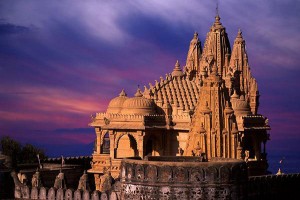
well connected to the other chief locations of Gujarat, reaching Somnath Prabhas Patan Museum would not pose any trouble for the tourists.
History of Prabhas Patan Museum, The Prabhas Patan Museum, Somnath, Gujarat, India derives its name from Prabhas Patan, a pilgrimage site. Prabhas Patan stands for the union of the mythological Hiranya, Saraswati and Kapila. According to legend, Lord Shiva’s Kalbhairav linga is also positioned at Prabhas. Moreover, this place has a connection with the moon as well as it is believed that the Moon God worshipped this Shivling.
Description of Prabhas Patan Museum, Somnath Prabhas Patan Museum houses the remnants of the earlier temples, in the form of a clutter of old carved stones that are littered in a courtyard. This museum also houses art treasures of several ancient periods. Holy waters of different rivers, inscriptions, 5 domes, 12th century toranas, pillars, stone apsaras, 11th century statues of Lord Agni, Uma Maheshwara, Lord Vishnu, Parwati and Natra Bhairava-all would enthrall you a lot.
At Prabhas Patan Museum, Somnath, Gujarat, India, you would also find pottery shards, a collection of seashells, a glass case of water bottles that contain samples from different rivers namely Nile, St Lawrence, Danube, Tigris, Murray, Plate in addition to seawater from New Zealand and Tasmania.
So, to see all these and more, make a visit to Prabhas Patan Museum, Somnath. However, remember that this place remains open on all days except holidays and Wednesdays. The visiting time is from 9 am to noon and again from 3 to 6 pm

